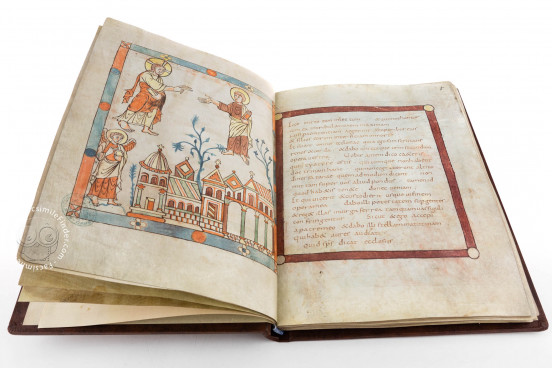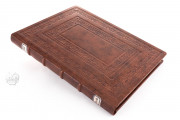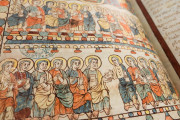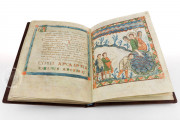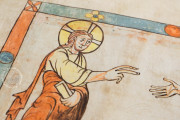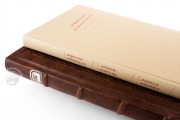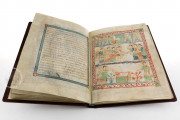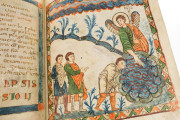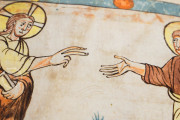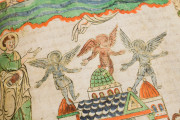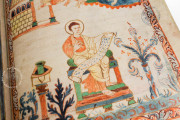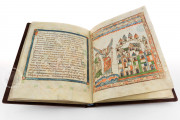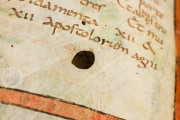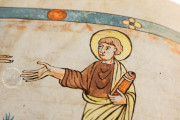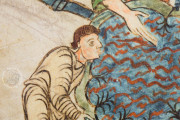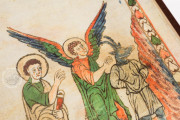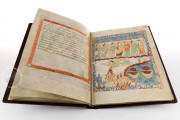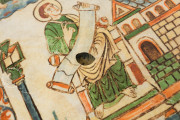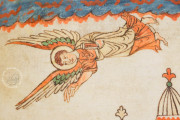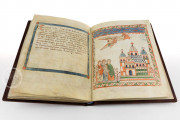One of four extant Carolingian Apocalypses, the Cambrai Apocalypse is a treasure of early medieval illumination. Dating from the years around 900, its pages preserve forty-six full-page miniatures set across from the relevant text in Latin. The Caroline minuscule script is displayed in a simple frame without additional commentary. Created in northern France, its relatively large format suggests the book was intended for a more public use within its original ecclesiastic context, probably at Cambrai, from which it takes its name.
The elaborate compositions in landscapes full of buildings and trees reflect the reimagining of the Classical tradition during the Carolingian Renaissance. The artist of remarkable talent employed a wide palette of colors and captures the moments of tension in the unfolding narrative of the Apocalypse. While it is not a manuscript replete with gold, the timeless antiquity of its detailed miniatures remains delightful and engaging to this day.
One of Four Carolingian Apocalypses
The illustrated Apocalypse as a separate work from the New Testament is usually associated with the Romanesque Beatus manuscripts of Spain or the Gothic English Apocalypses.
However, there are four extant Carolingian Apocalypses that demonstrate the attractiveness of John’s vision of the end of days as a pictorial subject, a subject of interest to Christian monks in an age of Viking raids from the north and the spread of Islam from the south.
Classical Motifs in Christian Context
Like the Trier Apocalypse (Trier, Stadtbibliothek, Cod. 31), the Cambrai Apocalypse relies on Classical compositions and motifs to illustrate the text, which is written in long lines of Caroline minuscule and presented in a frame on the page opposite.
The figures wear long tunics wrapped with toga-like drapes, columned buildings resemble Roman temples, and the tiered compositions are reminiscent of Roman wall paintings.
These ancient models are repurposed within a Christian context as part of the broad philosophy of the Carolingian Renaissance.
A Fixture of the Cathedral Library
Unlike most medieval manuscripts, the Cambrai Apocalypse has remained in Cambrai since the Middle Ages. Its excellent condition suggests it was always protected in a cathedral library.
While it was likely made in nearby Saint-Amand-les-Eaux as a copy of the Trier Apocalypse, it has letter forms from the Tours scriptorium demonstrating the broad influence of that production center. It was transferred from the cathedral library and is now kept in the Médiathèque municipale.
The codex features a full leather binding with paper flyleaves and pastedowns on boards lightly tooled without clasps or metalwork. The binding dates from after 1600.
We have 1 facsimile edition of the manuscript "Cambrai Apocalypse": Der Apokalypse von Cambrai facsimile edition, published by Quaternio Verlag Luzern, 2016
Request Info / Price
